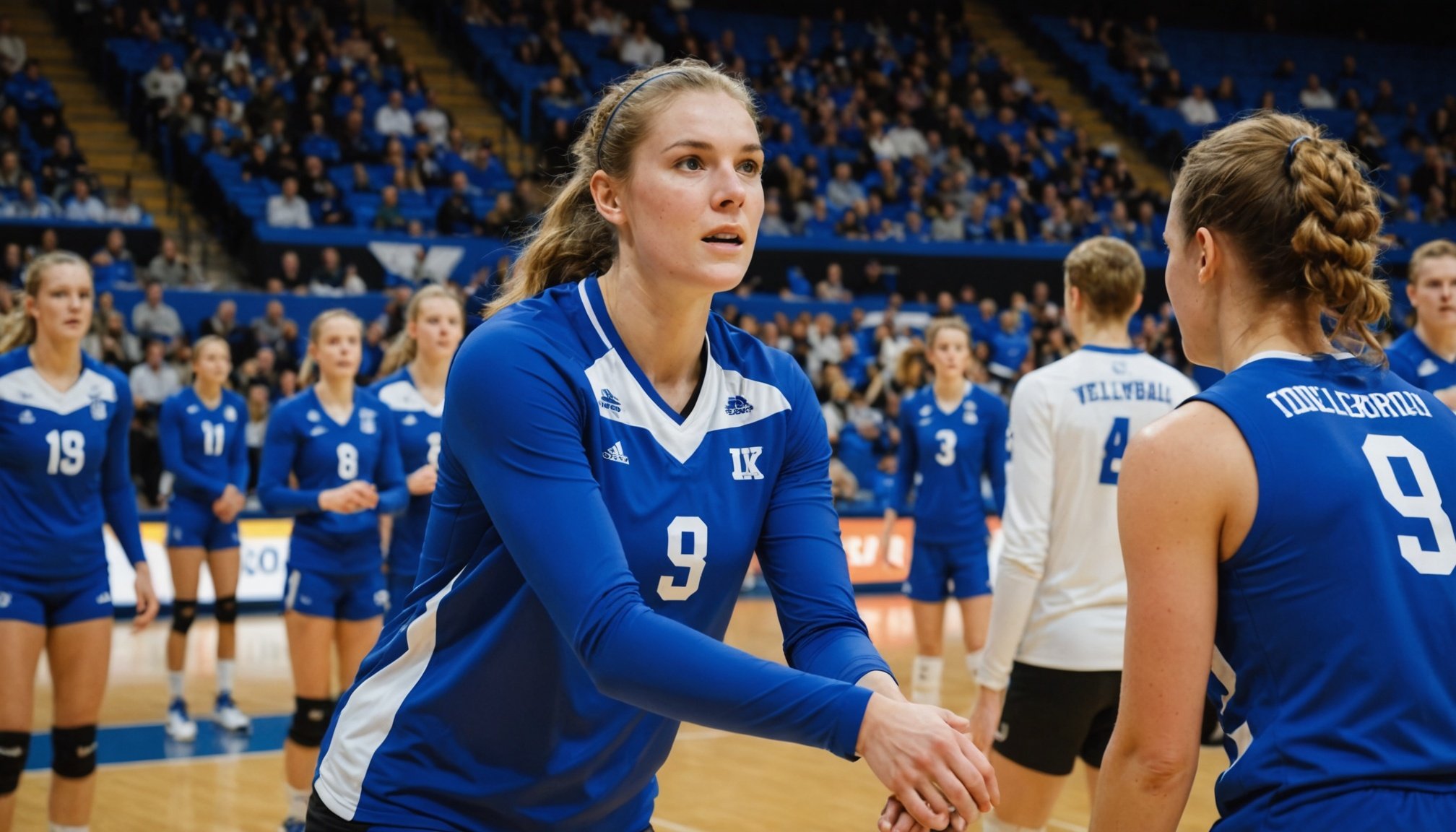Importance of Game Film in Volleyball Strategy
Game film analysis is an invaluable tool for developing effective volleyball strategies. By meticulously reviewing past matches, both players and coaches can glean insights that enhance defensive strategies. This form of analysis helps in identifying opponents’ patterns, strengths, and weaknesses, offering a tactical edge.
When delving into game film, key elements to focus on include player positioning, movement patterns, and successful plays. By examining these aspects, teams can devise counter-strategies that anticipate and neutralize the opposition’s tactics. Such insights are crucial in refining defensive setups and reaction times, ultimately fortifying the team’s collective performance.
Also to discover : Essential post-ride recovery tips for uk cyclists: proven strategies for long-distance performance
The benefits of visual learning in this context are profound. For players, seeing their actions or an opponent’s strategy in motion helps internalise concepts more effectively than theoretical approaches. Coaches can use this visual feedback to demonstrate areas of improvement, leading to more impactful training sessions.
Additionally, discussing game film allows for strategic conversations, promoting a deeper understanding of the game. This shared learning experience fosters improved communication and collaboration within the team. Overall, incorporating game film analysis into routine preparation empowers teams with the knowledge and adaptability required to excel in competitive play.
Have you seen this : Elevate your game: discover how yoga and mindfulness boost athletic performance in the uk
Analyzing Defensive Weaknesses through Game Film
Game film provides invaluable insights into defensive weaknesses. By closely scrutinizing game footage, one can uncover common errors such as missed tackles and poor positioning. Defensive analysis involves identifying patterns where teams consistently falter, allowing coaches to address these issues directly.
Techniques for identifying these patterns include paying close attention to how players respond under pressure and their timing during plays. For instance, if a team frequently hesitates when faced with a fast offense, this hesitancy can be annotated and reviewed in film sessions. Recognising such tendencies helps teams prepare for future matches by developing strategies to counteract potential pitfalls.
Metrics and stats play a crucial role in enhancing understanding. Metrics such as the number of yards allowed per game, or defensive errors per quarter, when analyzed alongside game footage, provide a comprehensive view of weaknesses. By correlating these stats with film analysis, it’s possible to pinpoint the exact moments when weaknesses typically arise.
The combination of game film and defensive analysis metrics not only improves individual player performance but also enhances team strategy. This dual approach equips teams with the knowledge to anticipate and adjust, ultimately fortifying their defensive line against future opponents.
Implementing Findings into Training Sessions
Delving into training techniques and performance enhancement is crucial for crafting successful athletes. Understanding your game film isn’t just about hindsight; it’s about foresight—developing drills that cater to observed weaknesses and strengths.
Developing Targeted Drills
Leveraging insights from game film allows you to design drills that directly address performance gaps. Crafting drills based on insights ensures that every movement during practice is purposeful. Incorporating specific scenarios, you can simulate real-game pressures, prepping athletes for any eventuality. Adjustments in training focus are sometimes necessary, particularly when team dynamics shift, requiring coaches to be both flexible and perceptive.
Feedback Loop with Players
Establishing an open feedback loop is essential. Engage players in engaging discussions on their performances, encouraging them to voice any concerns or observations. Utilizing video feedback, athletes can visually grasp necessary improvements, aiding in their development. This culture of continuous improvement motivates players to reach higher levels of success consistently.
Case Studies of Successful Implementation
UK volleyball teams exemplify the benefits of utilizing game film; through implementation, they have seen improved defensive metrics. Reviewing these case studies, lessons can be learned about efficiently integrating these techniques, leading to substantial performance enhancement. The evidence lies in tangible results and team successes post-implementation.
Collaborating with Coaches and Analysts
Effective coach collaboration is paramount for maximizing the potential of performance analysis in sports. When coaches and analysts work closely together, they can unlock deeper insights from game film, leading to improved strategies and tactics. This synergy ensures that teams capitalize on every opportunity to refine their gameplay.
At the heart of this process is the interaction between coaches and analysts. Coaches bring invaluable strategic knowledge, while analysts offer a meticulous breakdown of player performance and opponent tendencies. Together, they form a dynamic duo capable of dissecting every facet of the game. Each role is essential, as coaches prioritize tactics, and analysts focus on data-driven insights.
To foster fruitful coach collaboration, clarity in roles and communication is key. Here are some best practices for sharing insights among coaching staff:
- Establish regular meetings dedicated to reviewing analysis reports.
- Encourage open discussions to challenge existing strategies and consider novel approaches.
- Implement a centralized platform for storing and sharing performance analysis results.
With these practices, teams can ensure an efficient flow of information between coaches and analysts. This not only strengthens team performance but cultivates a culture of continuous improvement and learning. In conclusion, the harmony between coaches and analysts plays a crucial role in leveraging performance analysis effectively.
Visual Aids and Technology in Game Film Review
Utilising technology in sports has transformed game film analysis into a detailed and interactive experience. Sophisticated tools and software now allow coaches and players to break down plays with remarkable precision. Platforms like Hudl and Coach’s Eye are leading the charge, offering features such as frame-by-frame playback and detailed visual aids. These tools enable teams to dissect every element of gameplay, enhancing strategic planning.
By incorporating diagrams and other visual representations of plays, teams ensure that even complex strategies are understood at a glance. Diagrams highlight key momentums, player positions, and movement dynamics, offering a clear and concise method of communicating tactics. They’re invaluable for both visual learners and those new to a sport’s strategic depth.
The impact of technology on player understanding and performance is significant. Enhanced visual aids and advanced tech have bridged communication gaps between theory and practice. Players are able to visualise plays, leading to better retention and application during actual gameplay. The introduction of virtual reality is pushing these boundaries further, immersing athletes in simulated game environments, which are shown to improve real-world decision-making and reactions.
In this new era of sports analysis, embracing these technologies and tools is crucial for any team aiming to maintain a competitive edge.
Long-Term Strategies for Defensive Improvement
To achieve lasting success in defensive play, long-term strategies are essential. Establishing a consistent game film review routine forms the foundation of continuous learning. By regularly analysing game footage, players gain insights into their performance, identifying both strengths and weaknesses. This routine does more than highlight errors; it serves as a tool for developing and refining defensive skills over time.
Setting measurable goals is key to evaluating defensive improvements. Defining clear, achievable objectives allows players to track their progress and maintain motivation. These goals act as benchmarks, aiding in the assessment of growth and areas needing further development. By consistently working towards these objectives, players not only enhance their defensive capabilities but also foster a stronger team dynamic.
Encouraging player accountability is vital in this process. By engaging in personal development through film study, players assume responsibility for their growth. This practice promotes a culture of self-improvement, where each team member recognises their role in overall defensive success.
- Regular film analysis
- Setting targets for improvement
- Fostering accountability through self-assessment
Focusing on these long-term strategies ensures that players and teams continually evolve, adapting to new challenges while solidifying their defensive prowess.
















